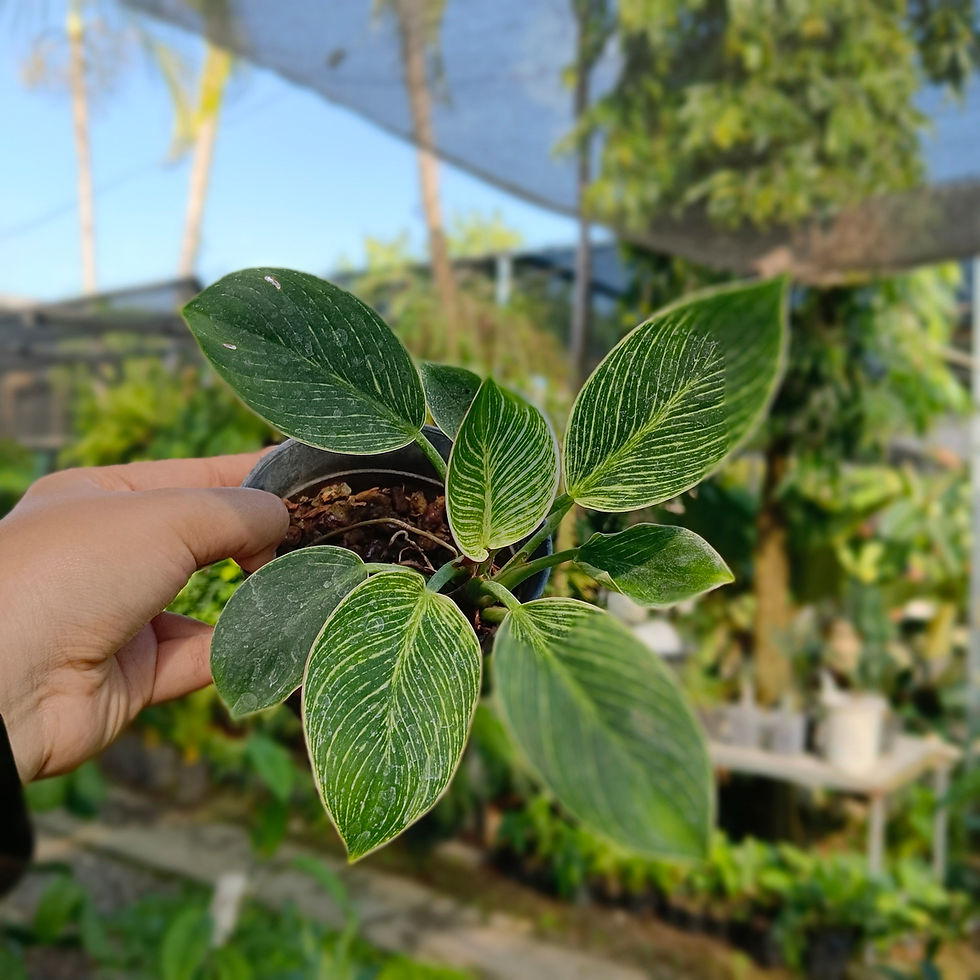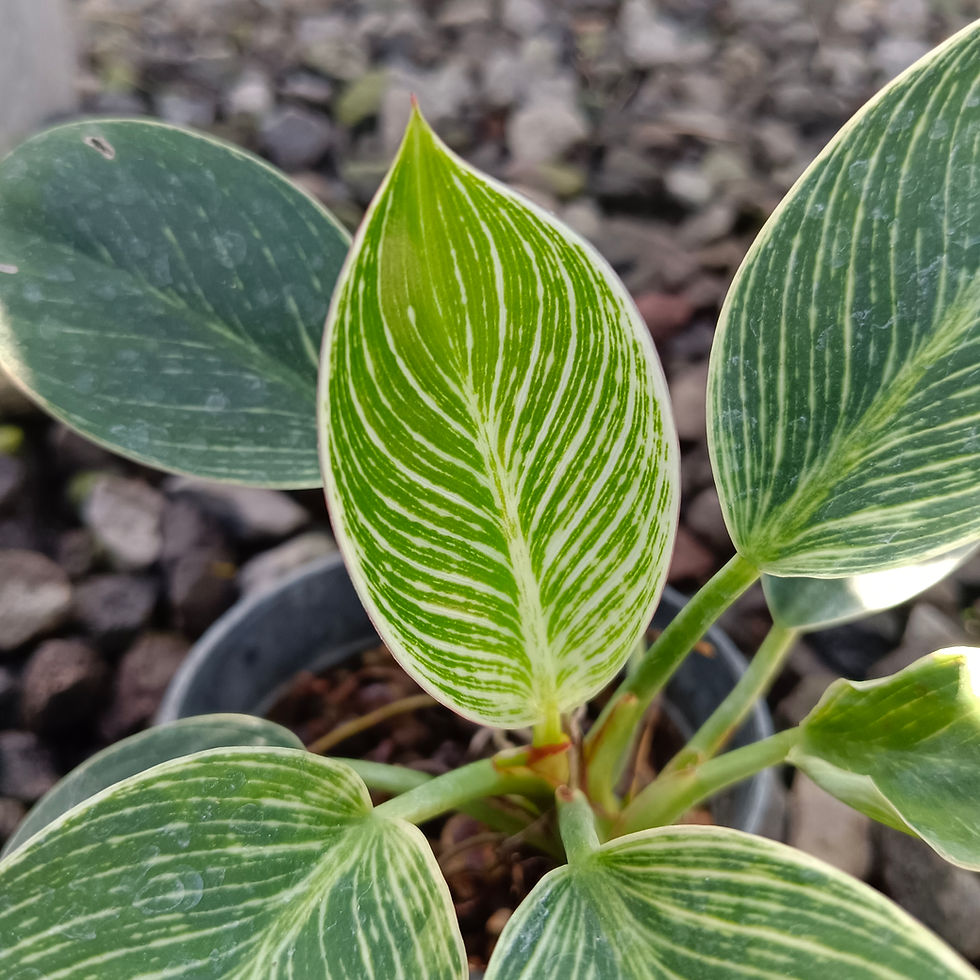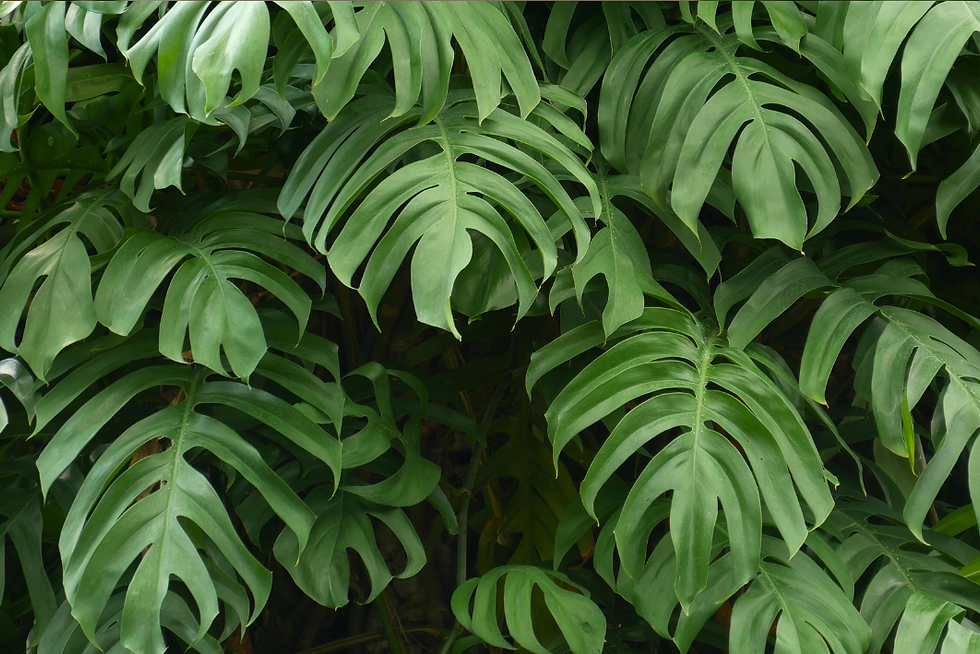Philodendron Birkin: A Striped Beauty for Your Indoor Jungle
- Iva Indo Tropical Plant
- Aug 14
- 2 min read

If you’re looking for a houseplant that offers both elegance and ease, the Philodendron Birkin might just be the perfect addition! With its rich green leaves streaked in creamy white pinstripes, this compact plant brings a refined, modern look to your space—without the need for high-maintenance care.
A Quick Look at the Birkin

Philodendron Birkin is a spontaneous mutation of the Philodendron Rojo Congo, a plant originally known for its deep burgundy foliage. Over time, Birkin developed its signature look: upright growth, thick stems, and uniquely patterned leaves that can surprise you with every new growth. Some leaves might be heavily variegated, others lightly striped—every plant is a little different.
It typically grows to around 50–80 cm tall, making it ideal for shelves, desks, or as a floor accent in smaller rooms.
Light Needs
Birkin thrives in bright, indirect light. It can tolerate lower light but may lose some of its striking variegation. Avoid direct sunlight, which can scorch the leaves, and rotate the plant regularly to help it grow evenly.
Watering Routine
Water when the top 2–3 cm of soil feels dry. This plant enjoys consistent moisture but doesn’t like soggy roots. Always empty the saucer after watering to avoid root rot, and use room-temperature water to prevent shock.
Humidity & Temperature
As a tropical plant, Birkin loves high humidity. If your space feels dry, consider misting the leaves a couple of times a week or placing the pot on a tray of moist pebbles. It prefers temperatures between 18–29°C and should be kept away from cold drafts.
Feeding & Fertilizing
In spring and summer, feed your Birkin once a month with a balanced, water-soluble fertilizer diluted to half strength. Reduce feeding in fall and winter when growth slows.
Repotting
Your Birkin will only need repotting every couple of years or when you notice roots escaping from the drainage holes. Choose a pot just one or two sizes larger and use well-draining potting soil. Spring is the best time to repot.
Pruning & Maintenance
This plant doesn’t require regular pruning, but you can pinch off the tips during the growing season to encourage bushier growth. If older leaves start to yellow, don’t worry—it’s part of the plant’s natural cycle. Simply remove them to keep the plant looking its best.
Propagation
Propagation is usually done through stem cuttings during the growing season. Choose a healthy stem with a node, cut just below the node, and root it in moist soil or water.
Watch for Pests
Birkin is fairly pest-resistant but can occasionally attract spider mites or mealybugs. Keep an eye out and treat any infestations promptly with insecticidal soap or neem oil.
A Note on Toxicity
Like many aroids, Philodendron Birkin is considered toxic if ingested. Keep it out of reach of pets and children, and wear gloves when pruning if you have sensitive skin.
Interested in bringing home a Birkin? Let us know, we’re happy to help you find the perfect one or you might looking to order in bulk? Chat with us directly here!




Comments